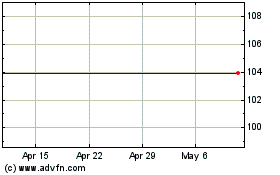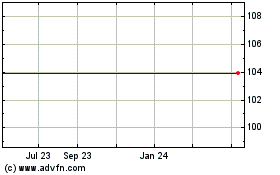Gen X Driving Social Networking at Work – Not Gen Y, Citrix Online Study Finds
October 19 2010 - 7:00AM
Business Wire
A report commissioned by Citrix Online, a division of Citrix
Systems, Inc., surprisingly revealed that Gen X workers – and not
those in the younger Gen Y generation – make up the majority of
those who use social networking for business, followed closely by
Boomers aged 55 and older. According to the data, Gen Y’s use of
collaborative technology also lagged others. The survey, conducted
by Forrester Consulting, provides a snapshot of how the global
workforce communicates as work becomes more distributed and usage
of collaboration technologies increases. It reveals a
highly-dispersed workforce still favoring meetings, but
increasingly using tools such as social networking and video chat
to communicate and collaborate.
Key Findings
The study asked information workers of all ages in the United
States, United Kingdom, France, Germany and Australia about their
business communication habits.
Gen Y does not have the monopoly on technology use and social
tools during the work day. Meanwhile, the older generation
is getting with the program.
- Gen Y is least likely to share
information via text message (26%, compared to 47% of those aged
55+), and least likely to use video conferencing, video chat and
web conferencing tools.
- Gen Y uses social networking the least
frequently (40% of Gen Y workers who use social media for business
do so daily, compared to 50% of those aged 55+).
- Older Boomers (55+) have increased
their business use of social media 79% in the past year.
The younger you are, the less you value meetings – and pay
attention.
- Gen Y is least likely to think meetings
are efficient. Only 29% of Gen Y workers think meetings used to
decide on a course of action are very efficient, compared to 45% of
Older Boomers.
- Gen Y is least likely to pay attention
in meetings and barely half (51%) believe it’s very important to do
so in meetings to decide a course of action.
Americans have more meetings – and pay more
attention.
- 90% meet in person to communicate and
build relationships, more than any other nationality.
- Of those, 51% meet daily, compared to a
mere 31% of French.
- 75% of Americans believe it’s very
important to pay attention in meetings to decide on a course of
action, compared to 50% of the French.
The in-person meeting is alive and well, but not necessarily
effective.
- 84% of all respondents have in-person
meetings, but meetings often don’t achieve their goals.
- Only 45% are very satisfied that
planning meetings achieve the task in hand, and only 30% believe
such meetings to be very efficient.
- Across all categories of meetings for
designated tasks (e.g. review of documents, plan projects or
initiatives, decision on a course of action), less than half of
respondents believe those meetings are very efficient.
In an era of multitasking, it’s still considered rude in a
meeting.
- 83% believe that side conversations are
unacceptable during a meeting, and 77% frown on those doing other
work on a computer or smartphone.
We still like to look each other in the eye.
- Germans like to see others during
meetings (75%), while Americans find it less important (55%) though
they have the most in-person meetings.
- 79% of those aged 55 and over think
it’s important, compared to 65% of Gen Y.
- Why? To read body language, say
78%.
Usage among users of collaborative technologies is rising
fast.
- 64% of those who use social networking
tools in business use them more than last year. Video chat, team
document-sharing sites and web conferencing also experienced
significant increases in usage, with 56%, 55% and 52%
respectively.
“We know from our own experience that the workforce is more
dispersed and mobile than ever, and that people are increasingly
turning to technology to help them collaborate with colleagues and
customers many miles away. With this research, we aimed to discover
exactly how business communication is changing because of new
workstyles and tools,” said Bernardo de Albergaria, vice president
and general manager, global marketing and ecommerce at Citrix
Online.
“One thing is clear: the human touch is incredibly important:
the desire to see each other and interact on a personal level is
not going away any time soon. There is some tension with the
findings between the way people actually work and the communication
methods they think are most effective – a sign that things are in
flux. Despite admitting that in-person meetings are often
inefficient and don’t achieve their goals, workers still seem to
like them. That’s probably because people are hard-wired to see
people and read body language. This points to a real opportunity
for virtual collaboration technologies, specifically video
conferencing, to further complement the need for personal
interaction, while reducing the inefficiencies of face-to-face
meetings.”
Methodology
Forrester Consulting conducted an online survey in September
2010 of 797 information workers evenly split between the United
States, United Kingdom, France, Germany and Australia. Information
worker is defined as anyone who uses a computer for work.
Respondents were of all ages (Gen Y: 18-30; Gen X: 31-44; Younger
Boomers: 45-54; Older Boomers: 55+) and from various
industries.
Related links
Infographic: The International Language of Business
Workshifting blog: workshifting.com
Twitter: @workshfting, @gotomeeting
Citrix Unveils GoToMeeting with HDFaces™: Integrated HD Video
Conferencing
Citrix Online Rated Best Overall Web Conferencing Experience by
Users, Again, According to Wainhouse Research
New Citrix Online Report Finds Virtual Workstyles Could Save
U.S. Business More Than $400 Billion a Year
About Citrix Systems, Inc.
Citrix Systems, Inc. (NASDAQ:CTXS) is a leading provider of
virtual computing solutions that help companies deliver IT as an
on-demand service. Founded in 1989, Citrix combines virtualization,
networking, and cloud computing technologies into a full portfolio
of products that enable virtual workstyles for users and virtual
datacenters for IT. More than 230,000 organizations worldwide rely
on Citrix to help them build simpler and more cost-effective IT
environments. Citrix partners with over 10,000 companies in more
than 100 countries. Annual revenue in 2009 was $1.61 billion.
Citrix®, GoToMeeting®, GoToMyPC® , GoToWebinar® , GoToAssist®
and GoToTraining® are trademarks of Citrix Systems, Inc. and/or one
or more of its subsidiaries, and may be registered in the U.S.
Patent and Trademark Office and in other countries. All other
trademarks and registered trademarks are property of their
respective owners.
Photos/Multimedia Gallery Available:
http://www.businesswire.com/cgi-bin/mmg.cgi?eid=6473073&lang=en
Citrix Systems (NASDAQ:CTXS)
Historical Stock Chart
From Jul 2024 to Jul 2024

Citrix Systems (NASDAQ:CTXS)
Historical Stock Chart
From Jul 2023 to Jul 2024
